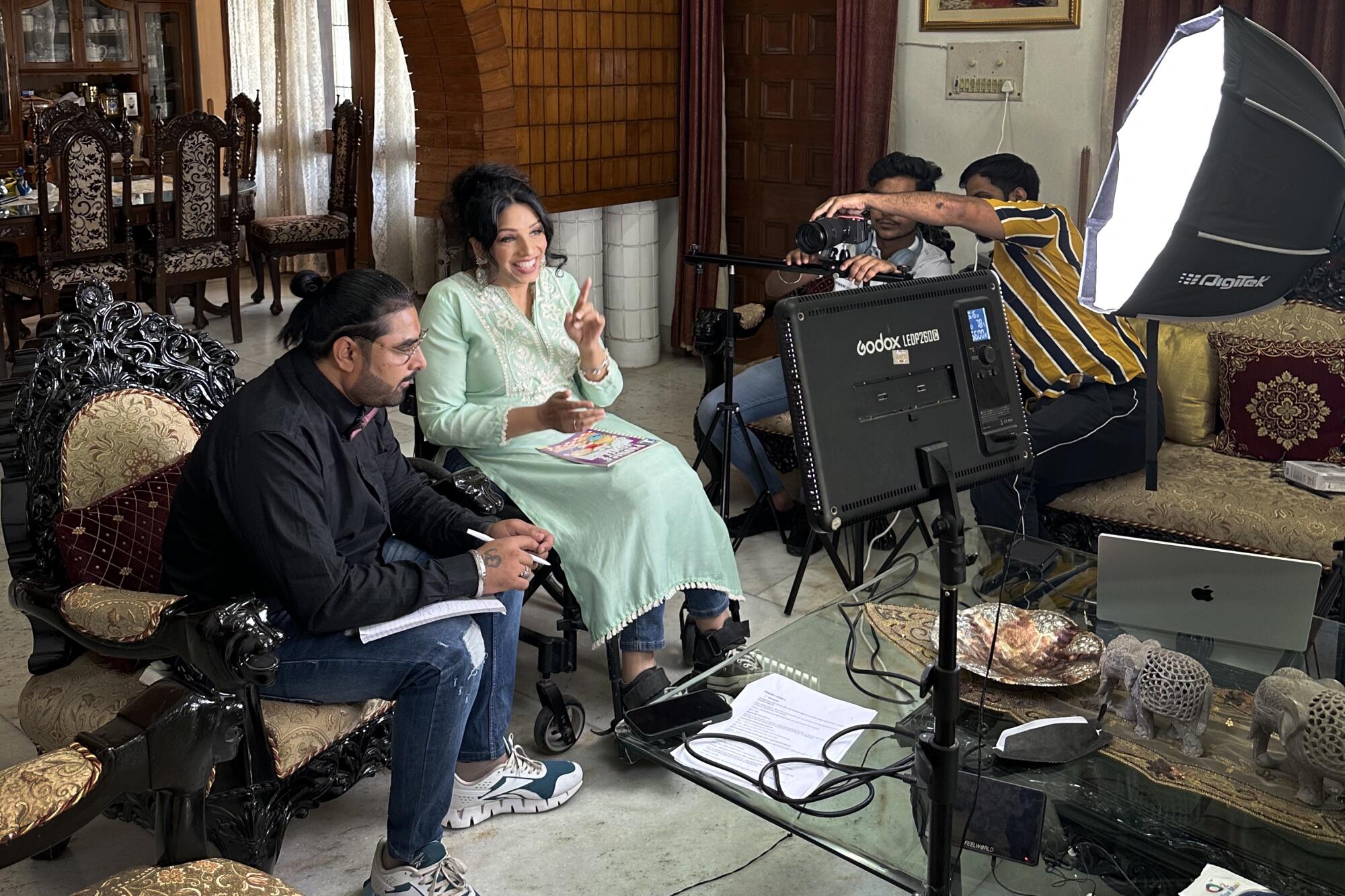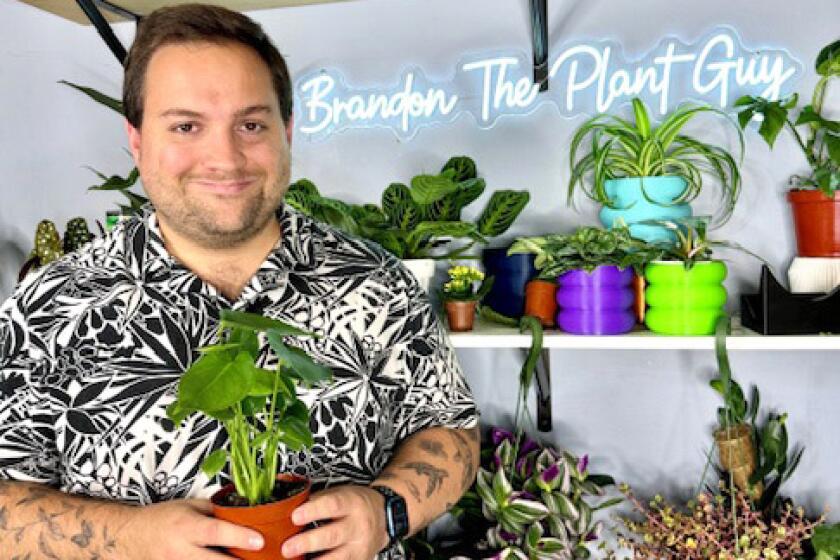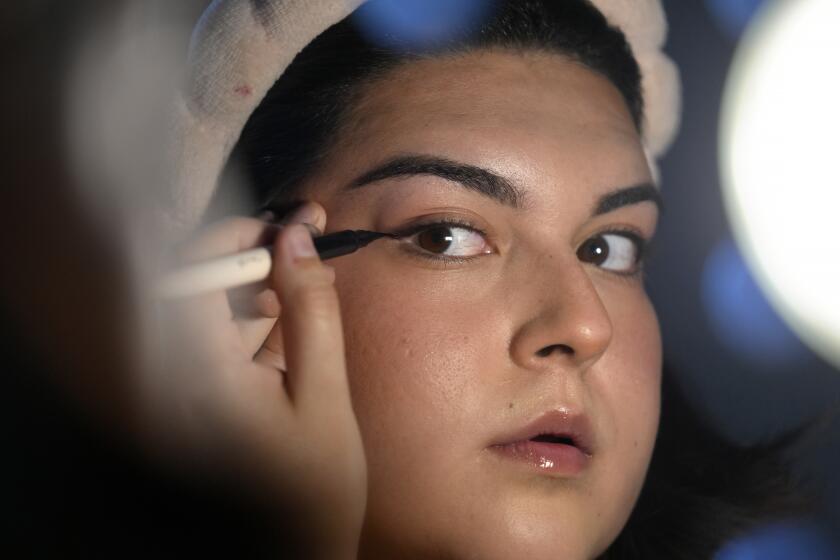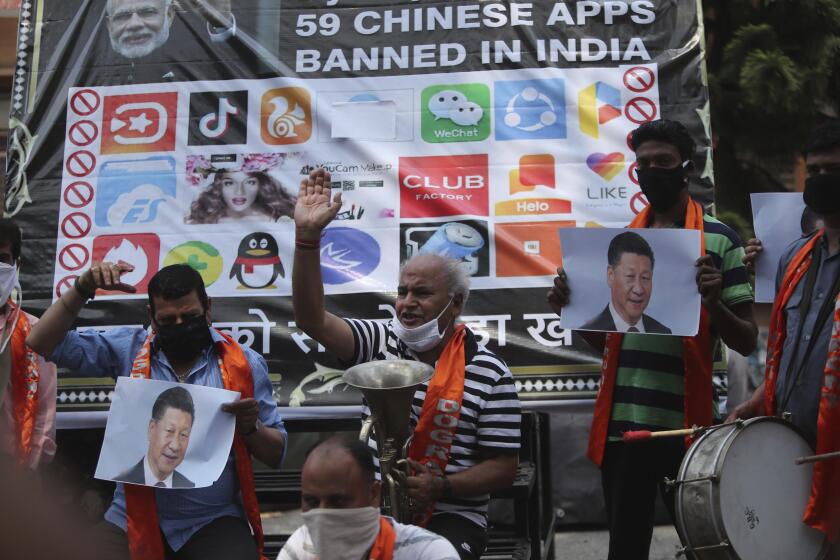
- Share via
Is there life after TikTok?
The question is front of mind for U.S. influencers and many small businesses as lawmakers threaten to ban the Chinese-owned social media app that’s become a cornerstone of internet culture and e-commerce.
For an answer, they might turn to India, which has been surviving without TikTok since June 2020.
That month, after 20 of its soldiers were killed in a border clash with China, the Indian government gave TikTok users a day to post tearful goodbyes and steer followers to other social media accounts. Then the app went dark.

“When it got banned, I had nothing,” recalled Gaurav Jain, who was one of the country’s more than 200 million TikTok users.
He was 25 and had just notched his millionth follower making self-help videos about mental health, men’s style and relationships.
Four years later, Jain runs his own social media marketing agency in Delhi, managing Indian content creators who pivoted to other platforms or joined the influencer world more recently. He had tried to make the transition himself but found starting from scratch demoralizing.
“The counter became zero for everyone,” he said. “That gave rise to a lot of new creators.”
The results for former TikTok stars have been mixed.
Gautan Madhavan, founder of Mad Influence, a marketing agency that managed more than 300 content creators before the TikTok ban, said that about a third of them were able to recapture their reach on Instagram Reels or YouTube Shorts within three months and that many are still playing catch-up.
After President Biden signed a bill that could ban TikTok in the U.S., experts say the economic ramifications could be significant.
Those short-video platforms launched shortly after the TikTok ban. Users who found success got in early and posted as often as 10 times a day, according to Saptarshi Ray, a consultant for influencers trying to grow their followings.
“Most of them were just trying everything,” Ray said. “Those were the creators that really flourished.”

India was TikTok’s fastest growing user base before the ban, which cut off a vital source of income for creators there.
The stakes are even higher in the United States, where the app has more than 170 million users, including 7 million businesses that TikTok says generated $14.7 billion in revenue last year from marketing on the platform. The Pew Research Center found that a third of Americans used TikTok last year, up from a fifth in 2021.
In April, President Biden signed a bill to ban the app by January 2025, unless Chinese parent company ByteDance Ltd. agrees to sells the app to somebody from a country that is not considered a foreign adversary.
The threat comes as suspicion between the U.S. and China has escalated, reviving concerns that TikTok could share sensitive data with the Chinese government.
The proposed ban still faces high hurdles. Both TikTok and a group of U.S. content creators separately filed lawsuits, arguing that blocking the app would be an unconstitutional assault on free speech. The Trump administration had also tried to ban TikTok but gave up after being challenged by federal courts.
In less than six years, TikTok has become deeply woven into the fabric of American consumerism. Now its future is uncertain, but its influence is undisputed.
TikTok has sought to assure the U.S. government that user data is protected on U.S. servers. And though its parent company is based in Beijing, TikTok moved operations to Singapore under a Singaporean chief executive.
The U.S. — along with Britain and Australia — has already prohibited the use of TikTok on government devices. But digital marketing experts said many U.S. users are still not seriously considering the possibility of a ban.
The Chinese video-sharing app is booted from its biggest foreign market as India retaliates for a deadly border clash.
“I don’t think the average TikTok user has synthesized in their brain that this is going away,” said Lawrence Vincent, associate professor of the practice of marketing at USC’s Marshall School of Business. “They’ve heard about it, but it isn’t real until it’s real.”
There has been little anticipatory migration to other platforms. But former TikTokers in India advised their American counterparts to prepare for the worst.

“We used to hear rumors about this happening, but we never really believed it,” said Ashi Khanna, a 26-year-old influencer from Delhi.
She launched her TikTok career by posting lip-synching videos in 2017 — when the app was known as Musical.ly — and eventually built a following of 1.7 million. She managed to post a farewell directing them to Instagram and YouTube, where she already had smaller followings. But fewer than 20,000 did so.
Since then, Khanna has concentrated on Instagram and managed to match her old following.
Congress passed a bill that could ban TikTok. What could happen next, and who might buy the social media platform?
In contrast to TikTok, which never placed a premium on production quality, Instragram required a more polished aesthetic that could mean spending hours on a single reel.
“There’s a huge difference,” Khanna said. “You need to understand what your audience likes, and your audience is not the same on every platform.”
Ankita Chhetri, 22, who lives in Mumbai, said experimentation was the key to life beyond TikTok.
She became TikTok famous in 2019 after posting a video of herself lip-synching to a popular Bollywood song. With 8.2 million followers, she earned promotional deals with music labels and scrapped her plans to be a nurse in hopes of making it as an influencer and actor.

After the ban, she started a YouTube channel and branched out from lip-synching into carefully planned reels of beauty, travel, fashion and inspirational quotes. As she gradually increased her following to 1.6 million, she used her improved engagement statistics to pitch brands on potential partnerships.
Still, Chhetri said there are times she misses the old days.
“TikTok just had some crazy amount of loyalty among audiences,” she said. “On Instagram, even if people are watching and liking your content, they’re still hesitant to press that follow button.”
Indian entrepreneurs created their own versions of TikTok, but failed to get much of an audience.
“It still felt like I was invisible, nobody was really there,” said Shreyas Mendiratta, a 23-year-old hospital worker who posted his comedy videos on Indian startup apps for a few months before giving up. “On TikTok, I felt seen, I felt heard.”
His videos don’t do as well on Instagram and YouTube either, which he suggested lack TikTok’s broad international appeal.
“It reduces the chances of them going global,” he said. “This is what I face on Instagram daily. I am very restricted to the region that I am geographically located in.”
Geet Jain, an inspirational speaker and English teacher, was visiting the U.S. when India banned TikTok. She could still use the app, but none of her 7 million followers in India could see her posts offering relationship advice, comedy bits and English lessons.
English lesson from Geet Jain on social media (Courtesy of Geet Jain)
“It was like this whirlwind of confusion of what do I do next,” said Jain, who declined to provide her age.
She turned to Instagram, growing 68,000 followers into 1.3 million. But she never achieved the same kind of exponential growth. Some of her TikTok fans had a difficult time finding her.
Back in the U.S. this year for an extended stay with her sister in Seattle, she has started posting on TikTok once more.
But she no longer knows what viewers want. Clips have gotten longer, with more casually narrated stories and less dancing and lip-synching than she remembers. There is more competition when it comes to her style of educational content.
While some of her English-language videos have gotten traction, she’s reluctant to invest too heavily in TikTok again.
“If it gets banned in America, it will be even more devastating for me,” she said. “Then my accounts are actually gone.”
















